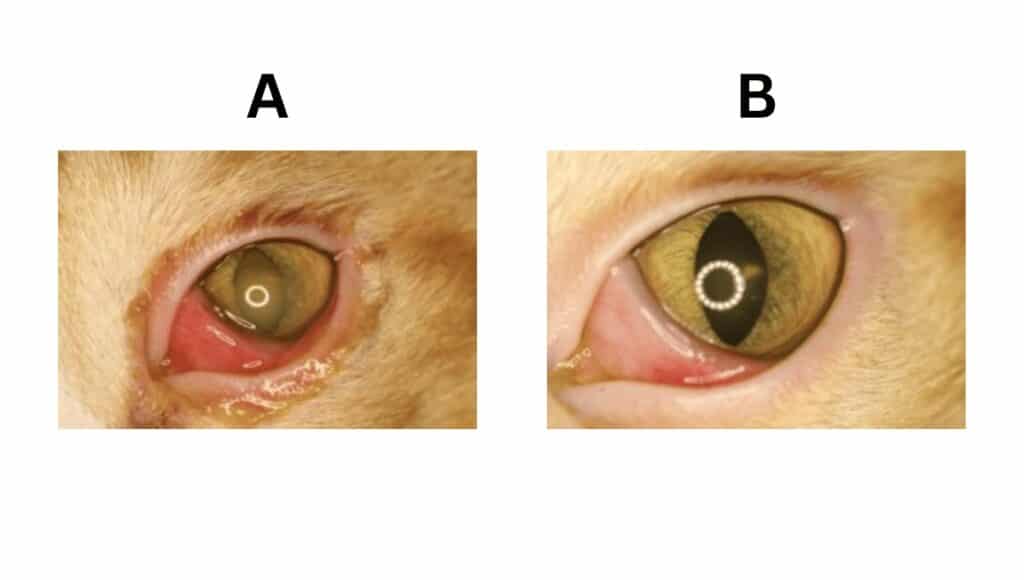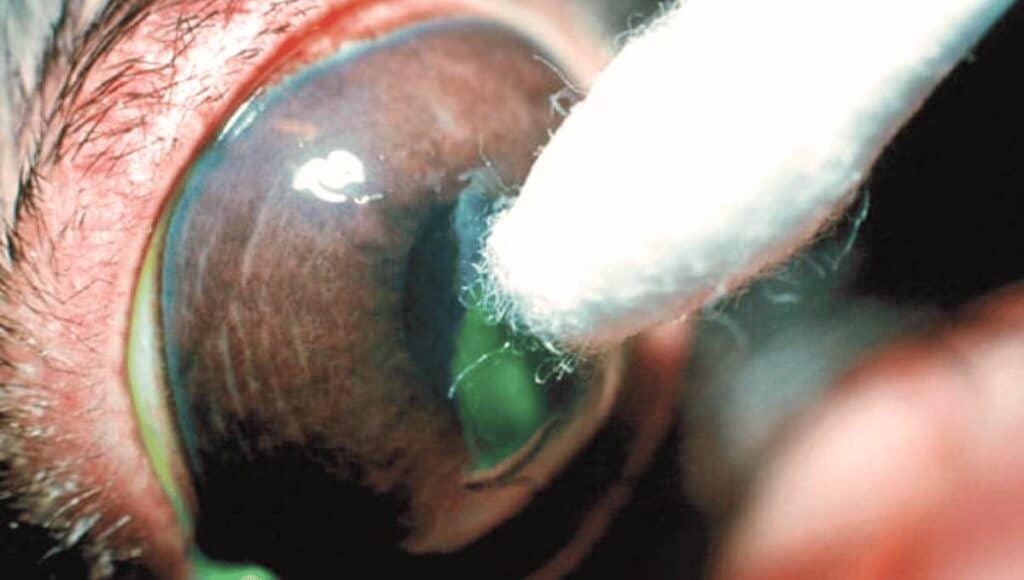Punctate ulcers cat are tiny, shallow wounds on the cornea the clear outer layer of the eye. While these ulcers might seem minor, they can quickly worsen if untreated, leading to more severe complications.
Your cat’s eyes are windows to a world of curiosity and wonder. However, delicate and vital, their eyes are also vulnerable to issues like punctate ulcers. These small but significant corneal injuries can cause discomfort and lead to severe complications if untreated. Whether it’s a playful scratch or an underlying condition, understanding the symptoms, causes, and treatments of punctate ulcers cat can make all the difference. This guide covers everything you need to know about protecting your feline friend’s eyesight, ensuring they remain healthy and happy for years.
Table of Contents
Causes of Punctate Ulcers Cat
Several factors can cause corneal ulcers in cats. These may result from external trauma, infections, or underlying conditions that weaken the cornea. Understanding the causes is crucial for taking preventative measures and reducing the likelihood of future ulcers.
Injury
Scratches caused by fights with other animals, sharp objects, or rough play can damage the corneal surface. Even a small injury may create a vulnerable spot for bacteria or other agents to invade, leading to ulcer formation.
Foreign Bodies
Foreign objects such as dust, seeds, or hair can lodge into the eye, irritating. Persistent rubbing or blinking from the irritation can eventually damage the cornea, leading to punctate ulcer formation.
Infections
Viral or bacterial infections often disrupt corneal health, making it susceptible to ulceration. Feline herpesvirus is a common example that triggers chronic eye problems and causes corneal damage over time if left untreated.
Dry Eye
Dry eye, or insufficient tear production, reduces the cornea’s natural defense system. Without adequate lubrication, the corneal surface becomes more prone to injuries, infections, and the formation of painful ulcers.
Symptoms to Watch For

Identifying early symptoms of punctate ulcers cat is vital. Observing changes in your cat’s behavior, appearance, or eye condition can help you take prompt action to prevent the ulcers from worsening or causing long-term damage.
- Squinting or Keeping the Eye Closed: Indicates discomfort or sensitivity to light, common signs of corneal irritation.
- Cloudiness or Redness in the Eye: These changes often signal inflammation, infection, or injury to the corneal layer.
- Watery Discharge: An overproduction of tears may occur due to irritation, serving as a protective mechanism.
- Frequent Pawing at the Face: A reaction to discomfort or itching around the eye area, potentially worsening damage.
Diagnosing Corneal Ulcers
Veterinarians use advanced tools and diagnostic methods to assess and confirm corneal ulcers. Prompt and accurate diagnosis lays the foundation for effective treatment, reducing the risk of complications and promoting quicker recovery.
Eye Exam
A veterinarian performs a detailed visual inspection of the eye using magnification tools. This exam helps identify any abnormalities, including visible scratches, swelling, or other indications of corneal injury.
Fluorescein Stain
This diagnostic dye sticks to damaged corneal areas, making ulcers easily identifiable. The highlighted regions allow veterinarians to gauge the severity and size of the ulcer for better treatment planning.
Progression and Complications
A corneal abrasion that is not treated can progress into a deeper ulcer. Additional warning signs, such as red streaks or worsening discomfort, may signal infection or significant inflammation. Delayed treatment can result in vision impairment or even eye loss.
Treatment Options

A range of treatments is available to address punctate ulcers cat, depending on their severity. Treatment options focus on healing the damaged cornea, controlling discomfort, and addressing underlying causes like infection or inflammation.
Medications
Topical antibiotic drops help prevent bacterial infections from spreading, while anti-inflammatory drops reduce swelling and promote healing. Regular application ensures effective management of the ulcer.
Pain Management
Oral or topical medications minimize discomfort and enhance your cat’s well-being during the recovery period. This is crucial, as unmanaged pain can lead to further eye irritation.
Specialized Procedures
Severe or non-healing ulcers might require advanced techniques. Surgical procedures, like debridement or keratotomy, target stubborn ulcers and stimulate faster healing.
Advanced Care: Debridement and Punctate Keratotomy
When standard treatments are insufficient, advanced care options can help restore corneal health. These procedures are highly effective for addressing persistent or complicated ulcers in cats.
Debridement
This technique involves carefully removing dead or damaged tissue from the corneal surface. The cleaned area promotes new tissue growth, ensuring that healing occurs more efficiently.
Punctate Keratotomy
Small, controlled incisions are made in the cornea to stimulate tissue regeneration. This encourages proper healing of deep or indolent ulcers while preventing further complications.
Healing and Recovery

Proper post-treatment care ensures your cat’s cornea heals without complications. Keep an eye on the following recovery signs to monitor progress and ensure that treatment is effective.
- Clearer Corneal Appearance: Indicates a reduction in inflammation and healing progress.
- Reduced Squinting or Pawing: A sign that your cat is experiencing less discomfort or pain.
- Diminished Discharge: Reflects decreased irritation, an essential milestone in recovery.
Preventing Future Corneal Damage
Simple preventative measures can significantly reduce the chances of recurring corneal issues. By maintaining a safe environment and regular monitoring, you can help preserve your cat’s eye health over time.
- Keeping the Environment Clean: Remove sharp or dangerous items that could harm your cat’s eyes.
- Regular Eye Checks: Examine your cat’s eyes periodically for signs of irritation or redness.
- Managing Underlying Conditions: Treat any recurring dry eye or related issues promptly.
Special Cases: Indolent Ulcers and Infections
Indolent ulcers, known for their slow healing, require long-term care. Bacterial or fungal infections often compound these ulcers, necessitating close monitoring and customized treatment plans for effective management.
Veterinarian or Specialist: Where to Go for Care?
Most cases can be treated by general veterinarians, but advanced or recurrent ulcers might require the expertise of a veterinary ophthalmologist. Specialists are equipped to handle complex issues and provide tailored care for serious eye conditions.
Prognosis and Long-Term Care
Punctate ulcers cat generally have a positive prognosis when treated early. Follow all care instructions provided by your veterinarian, and schedule regular follow-ups to monitor healing progress. These steps help prevent recurrence and ensure long-term eye health.
Conclusion
Punctate ulcers cat are treatable, but early recognition and intervention are vital. Watch for symptoms like eye redness, squinting, or discharge, and consult your veterinarian promptly. Treatments range from medication to advanced procedures like keratotomy, depending on severity.
While most cats recover well with proper care, regular eye check-ups and precautions can prevent future problems. By staying informed and proactive, you can protect your cat’s vision and ensure their comfort and happiness.
FAQ;s
What should I do if I suspect my cat has a corneal ulcer?
If you suspect punctate ulcers in your cat, schedule an immediate visit with your veterinarian for diagnosis. Timely treatment is crucial to prevent complications and ensure a smooth recovery.
Are certain cats more prone to ulcers?
Yes, flat-faced breeds like Persians or Himalayans are more prone to punctate ulcers cat due to their eye structure, which increases vulnerability to injuries and dryness.
Can punctate ulcers heal on their own?
Small punctate ulcers in cats may heal naturally, but most require veterinary care to prevent infection, reduce discomfort, and ensure proper healing without complications.
Do eye drops cause side effects?
Eye drops can sometimes cause mild side effects like drooling or squinting in cats with punctate ulcers cat. These symptoms are temporary and subside as the cat adjusts.
How can I reduce my cat’s pain during treatment?
To reduce pain from punctate ulcers cat, use veterinarian-recommended pain medications, ensure a stress-free environment, and apply treatments gently to avoid further irritation.
What are the risks if an ulcer isn’t treated?
Untreated punctate ulcers in cats can worsen, leading to infections, vision loss, or even eye rupture. Early treatment is essential to avoid severe complications and maintain eye health.
Latest Article:
Cat Bump After Break Radius: Diagnosis, Causes & Solutions

